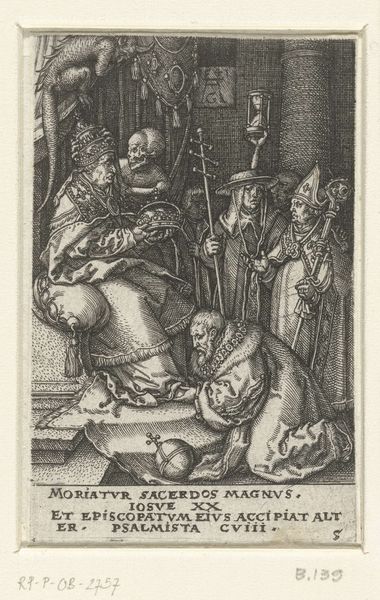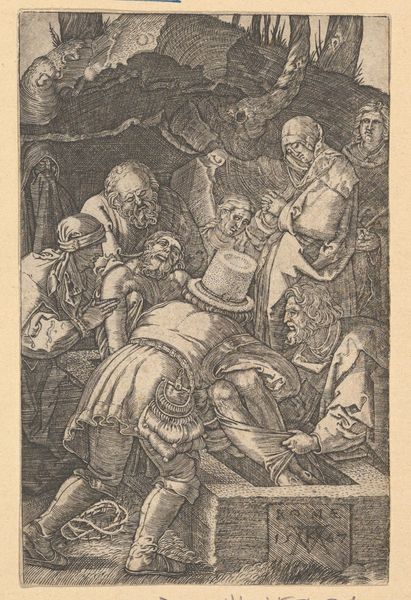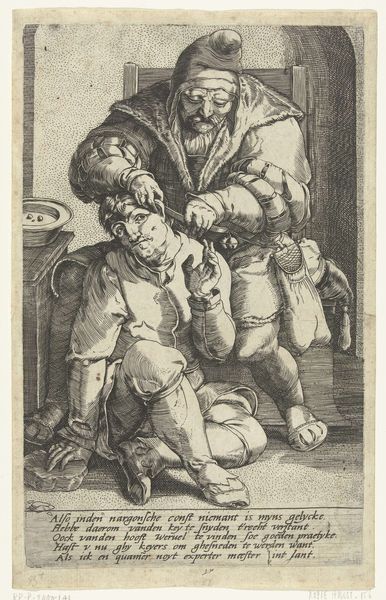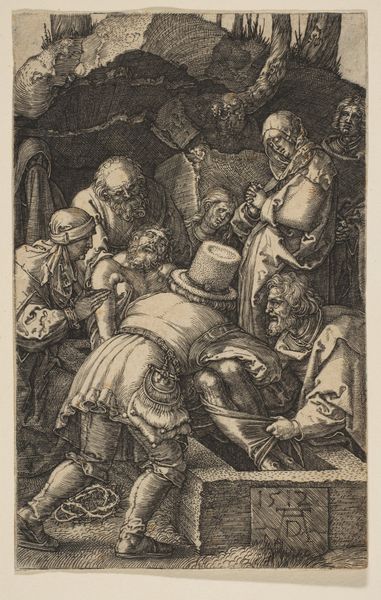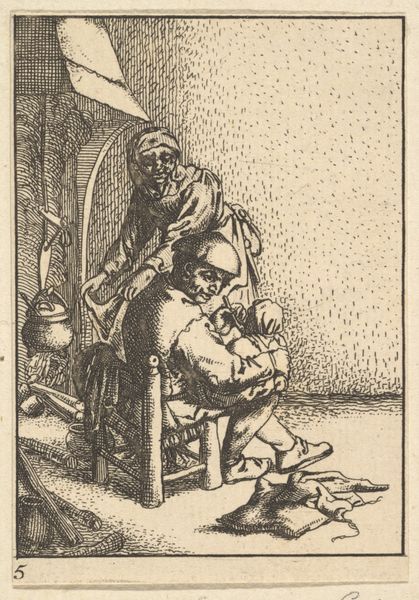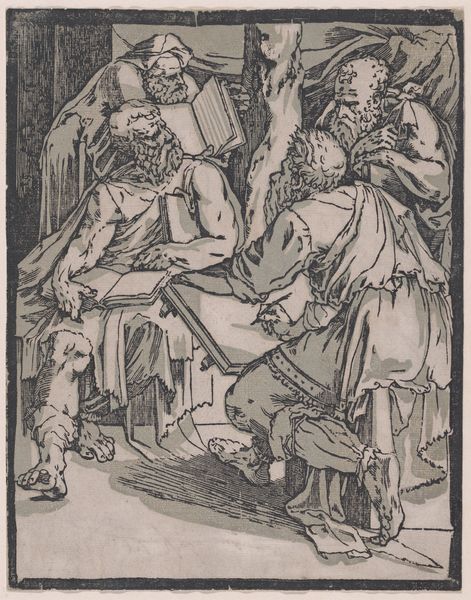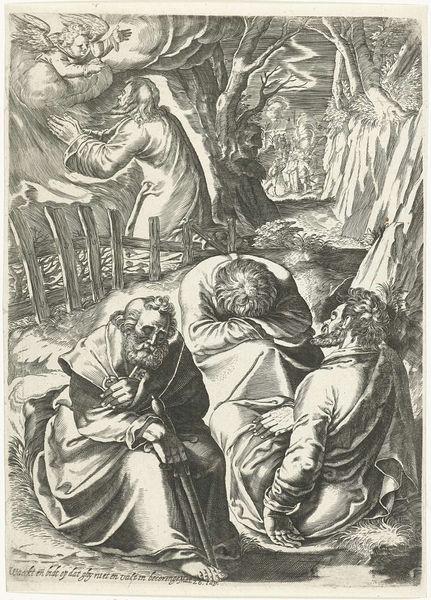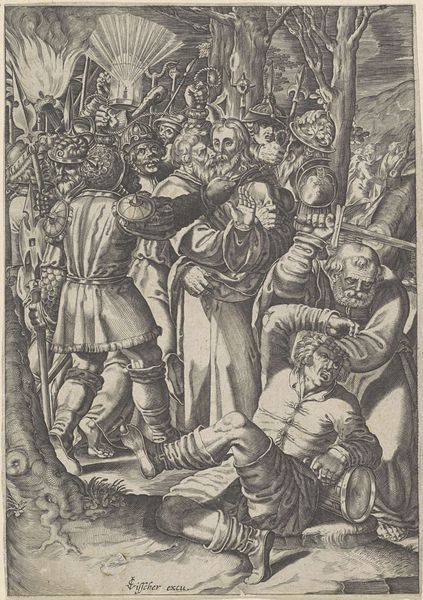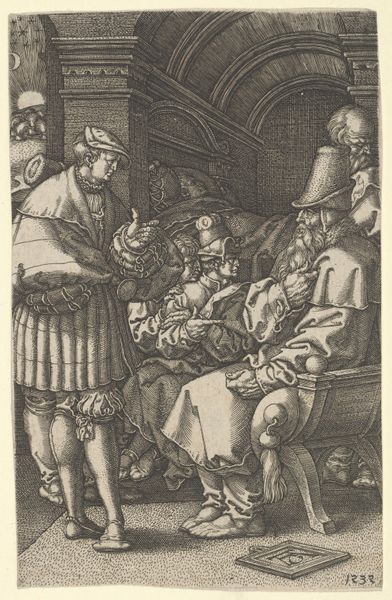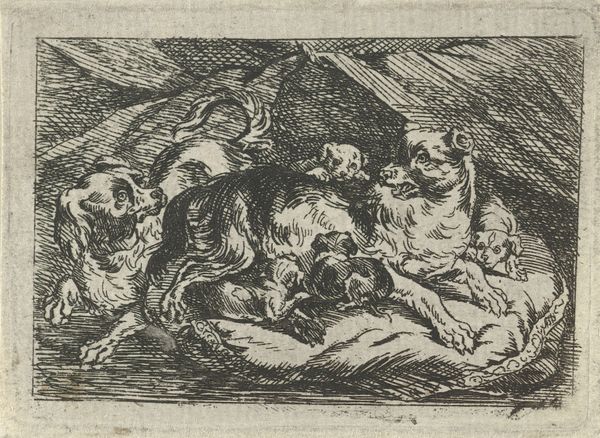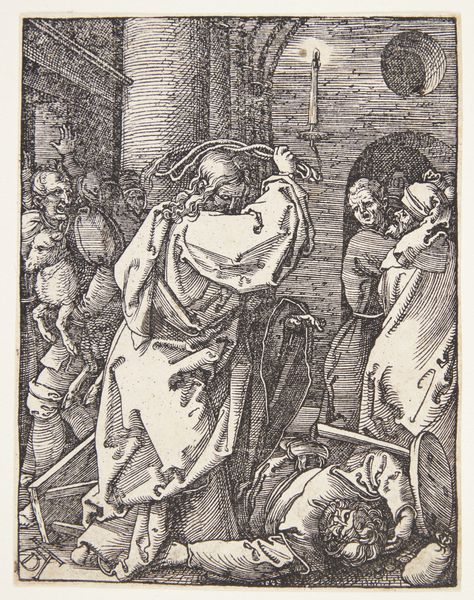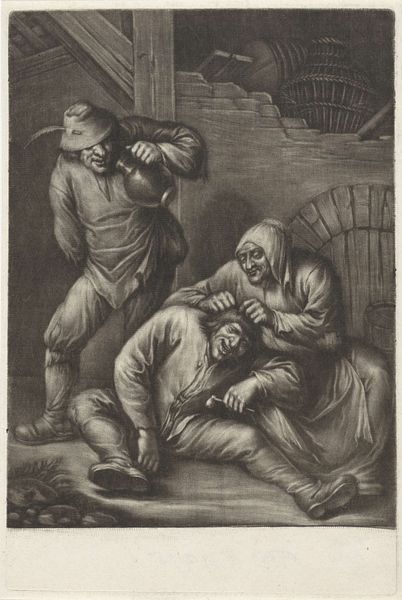
print, engraving
#
narrative-art
# print
#
figuration
#
line
#
history-painting
#
northern-renaissance
#
engraving
Dimensions: height 78 mm, width 113 mm
Copyright: Rijks Museum: Open Domain
Curator: Take a moment to consider this engraving, "Moses and Aaron," created in 1526 by Sebald Beham. It's part of the Rijksmuseum collection. Editor: Whoa, that's intense! The heavy lines, the craggy faces... It's got this really severe, Old Testament vibe, you know? Like judgement is right around the corner. Curator: Absolutely. Beham’s choice of line engraving amplifies that sense of solemnity and gravity. Consider the tablets of the law behind Moses, symbols of divine authority, and then Aaron, set against a detailed background. Both figures are quite commanding. Editor: Commandingly severe! I mean, look at those beards – practically architectural. They are lost in their studies, clearly, yet there's a slight contrast. Aaron, maybe because of the landscape behind him, appears more embedded into the physical world than Moses. Curator: An astute observation. Moses’ association with the tablets might be seen as emphasizing his role as an intermediary, conveying divine law. Meanwhile, the landscape may root Aaron in the historical and cultural context of the narrative. Beham employs these visual cues deliberately, furthering the didactic aims characteristic of the Northern Renaissance. Editor: Didactic indeed. It feels like a visual sermon. Still, it is beautiful, the level of detail given that it’s just a print. It’s quite dark and powerful. What stands out the most is how heavy everything is—their robes, the book they're reading, even the air around them. Curator: Yes, the materiality comes across so strikingly here, particularly considering the nature of engraving itself, a print, which suggests a potentially wide distribution of the work and its message. The artwork becomes something like an accessible token to facilitate contemplation. Editor: Definitely a conversation starter. Makes you think about the weight of tradition, of faith, of, well, everything. I find myself looking deeply and I wonder, what part of this engraving holds the key? Curator: And that, I think, is part of Beham's intent, to initiate inquiry into these potent symbols. Editor: It certainly worked. I'll leave with an introspective mood about these imposing figures.
Comments
No comments
Be the first to comment and join the conversation on the ultimate creative platform.
